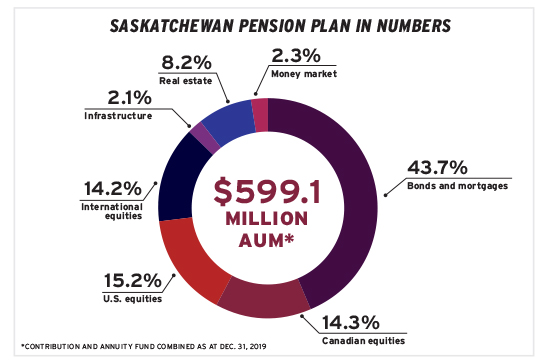

The Saskatchewan Pension Plan is improving investment choice for members in the accumulation phase and introducing new options to help them through decumulation as well.
Leading up to retirement, SPP members are defaulted into a balanced fund, which has been in place since the plan started in 1986. In 2010, it introduced a short-term fund, which has traditionally been in money-market instruments.
The short-term fund aims to provide a more stable income for people who aren’t comfortable with the level of equities in the balanced fund or are nearing retirement, says Katherine Strutt, the plan’s general manager.
Read: A look at how five DC plan members are approaching decumulation
The fund’s introduction stemmed largely from the 2008 financial crisis, because members wanted to be able to lower their equity exposure. It was also introduced as a risk management tool for members and to respond to their concerns about lack of choice.
However, the fund hasn’t had a lot of uptake in the past decade. As a result, the SPP has made some changes, effective Jan. 1, 2020, including renaming it the diversified income fund and updating its asset mix. “We felt it wasn’t as good a service to members as we were hoping,” says Strutt. “Interest rates are low [and] the fund is very small, so after fees, it’s got a very low return.”
Getting to know Katherine Strutt
Job title: General manager
Joined SPP: 1990
What keeps her up at night: Trying to help members understand what they have, what they need and the gap in terms of retirement savings
Outside of the office she can be found: Volunteering in the arts and culture sectors within the community and singing in the community choir
The new asset mix is 50 per cent in money-market instruments and 50 per cent in a bond-plus pooled fund, instead of 100 per cent in money-market instruments. The change adds a bit of risk to the otherwise risk-free portfolio, she notes.
The SPP has seen more interest in the fund since the coronavirus pandemic. “Obviously, since the markets have taken the roller-coaster ride down in February and March, there’s been an increased interest in members transferring all, or a portion, of their funds out of the balanced fund into [the diversified income fund] to give them some capital protection,” says Strutt.
Read: Webinar: 2020 CAP Member Survey: Retirement savings, financial well-being in the era of coronavirus
Plan members will receive their semi-annual statements in June, so if markets are still in free fall, uptake in the diversified income fund may increase, she adds, noting many members are currently riding out the storm.
When SPP members retire, they can transfer their account balance to an annuity product with a life insurance company or to a prescribed registered retirement income fund or locked-in retirement account. They can also buy an annuity from the SPP.
In terms of choice, about half of members opt to annuitize through the SPP while the other half opt to transfer out of the plan. “A big thing in [the annuity pricing] formula is the current long bond rates because we do a buy-and-hold strategy on that fund, so interest rates are very low and people are reluctant to lock their funds in,” says Strutt. On the other hand, she notes, many members don’t want to deal with their investment portfolio and just want to know their base retirement income.
Read: A look at the legislative landscape for decumulation options in DC plans
SSP members can also choose to annuitize part of their retirement income, yet this option doesn’t have large uptake.
To provide plan members with even more choice, the SPP intends to introduce a variable benefit option this year. “We were hearing a lot from members that they’ve been with the plan for a long time, they like the investment products, they appreciate the plan and they want to stay with us in retirement and that’s when we started looking at a variable benefit option.”
“I anticipate that there will be more use of the diversified income fund as part of the variable benefit going forward,” says Strutt.
Yaelle Gang is editor of the Canadian Investment Review.
